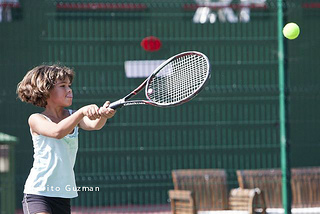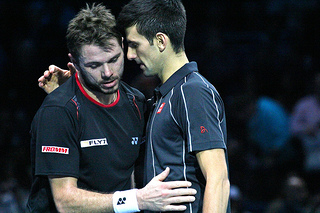LEARNED HELPLESSNESS
Summary
In learned helplessness studies, an animal is repeatedly exposed to an adverse stimulus which it cannot escape. Eventually, the animal stops trying to avoid the stimulus and behaves as if it is helpless to change the situation. When opportunities to escape become available, learned helplessness means the animal does not take any action.
Detail
In Part 1 of Seligman and Steve Maier's experiment, three groups of dogs were placed in harnesses. Group 1 dogs were simply put in the harnesses for a period of time and later released. Groups 2 and 3 consisted of "yoked pairs." A dog in Group 2 would be intentionally subjected to pain by being given electric shocks, which the dog could end by pressing a lever. A Group 3 dog was wired in series with a Group 2 dog, receiving shocks of identical intensity and duration, but his lever did not stop the electric shocks. To a dog in Group 3, it seemed that the shock ended at random, because it was his paired dog in Group 2 that was causing it to stop. For Group 3 dogs, the shock was apparently "inescapable." Group 1 and Group 2 dogs quickly recovered from the experience, but Group 3 dogs learned to be helpless, and exhibited symptoms similar to chronic clinical depression.
In Part 2 of the Seligman and Maier experiment, these three groups of dogs were tested in a shuttle-box apparatus, in which the dogs could escape electric shocks by jumping over a low partition. For the most part, the Group 3 dogs, who had previously learned that nothing they did had any effect on the shocks, simply lay down passively and whined. Even though they could have easily escaped the shocks, the dogs didn't try. Their lack of attempt was due to an effect called retardation of learning. Learning that response and shock are independent made it more difficult to learn that a response does produce relief by terminating shock. The emotional stress that the dogs experience when learning that the trauma is uncontrollable produced failure to escape.
http://en.wikipedia.org/wiki/Learned_helplessness
This is an important discussion when it comes to tennis. We see a number of children making the same mistakes, making the same attempt to solve a problem that they have seen produce the outcome of failure in the previous attempt.
Their inability to produce a new method, or a new potential plan that might result in a different outcome is an example of patterned “Learned helplessness” in their choices.
We should be able to see a logical progression in a tennis players approach to trying to win a match, not in order at all, but something like this:
- Start by trying to use weapon, notice it’s not working
- Try being more consistent than the other person, notice it’s not working
- Try using variety to force errors, notice it’s not working
- Try using short ball to bring them in and then lob, notice it’s not working
- Try using short ball to bring them in and pass, notice it’s not working
- Try serve and volleying, notice it’s not working
- Try making them hit one particular shot until it breaks down, notice it’s not working
- Try to tire them out by playing angles, notice it’s not working
- Try to play faster or slower to change tempo to see if this will shake their concentration, notice it’s not working
- Try moon balling , notice it’s not working
Finally RUN out of options, and concede defeat to a better player.
This is a contradiction to what we actually see as the logical progression though. We see something more like this:
- Start trying to use weapon, notice it’s not working
- Start trying to be more consistent, notice it’s not working
- GO BACK to just trying to use weapon, LOSE
This is an example of learned helplessness, the player is unable to continue to refine and improve his attempt, and after a minor attempt, reverts back to his standard approach which is not successful, and simply accepts his/her fate.
There is a particularly big need for an understanding of this with regards to mental attitude. Developing players need to be fully aware that one of their huge undertakings is to develop a highly functional approach to mental responses. Someone like Nadal might have his emotional day look like this:
- Wake up feeling tired and exhausted
- Make point of acknowledging that he is tired and will not be at his best performance
- Look at his game plan and adjust areas that will suffer with his fatigued body
- Start process of AFFIRMATIONS, thinking about opportunity
- Look up motivating videos, favorites and inspirational pieces
- Start working on ideal performance state earlier than normal, knowing today will be extra challenge
- Enter court, and go down an early break, Remind himself today is going to be tough, this is just one of the many things he will have to over come
- Ask himself what he is noticing that can help his cause
- Start using pumping up actions like jumping, bouncing, affirmations like “Look for the ball", "Be ready", "He is tired too", "Its days like this that have the most potential", "Fight for everything"
NADAL knows that there is a lot that he can do to influence his mental state, his choices and his feelings. He is going through a process that changes his internal state, and his actions.
OUR PLAYER wakes up feeling tired, decides not to have regular warmup, after going down a break com pains that the tournament is badly run and they should never have put her/him on so late for a match. Complains how unlucky she/he always is.
This person clearly does not understand that they can influence and change their behavior, and feelings, and therefore accepts them as real and stops problem solving. Another example of learned helplessness.





